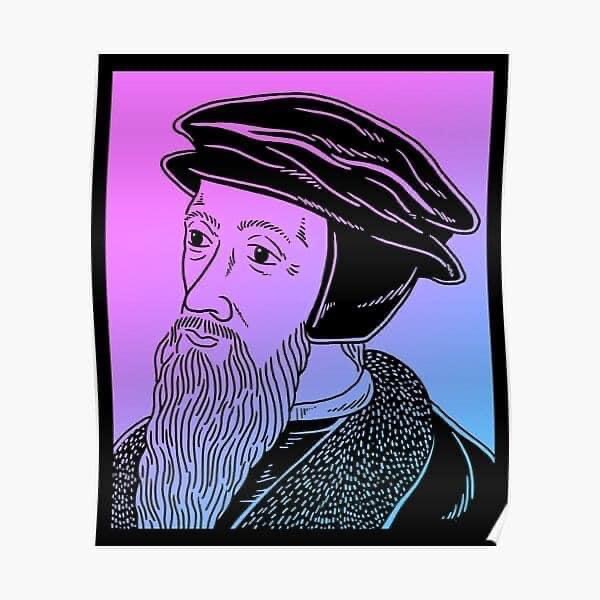
Today the church remembers a theologian who was probably a little too smart for his own (and our) good: Saint John Calvin, Renewer and Reformer.
Calvin was a serious child, and would grow up to be a very serious adult. He had a logical mind, and was not prone to swings of emotion (like Luther), but rather relied on formulas to make sense of the world, for better or for worse. He was well read, and devoured Augustine and books on grammar and rhetoric. At the age of 19 he had already earned a masters degree.
Calvin studied law at first, like many who would go on to serve the church (looking at you Luther), and as his father had recently been excommunicated over some legal issues, Calvin’s love of theology stayed strong but his relationship with the church was frayed.
After his father died, Calvin officially broke with the Roman church and joined the Reformation movement in 1533. He left France, settled in Basel, and began publishing theological works in earnest. Institutes of Christian Religion was put in print in March of 1536, and he eventually found himself in Geneva, organizing the Reformation movement there. He developed a theocratic organizational schematic for the church there, but was eventually invited to leave Geneva when his formulaic approach came into conflict with the popular Zwinglian practices adopted by many of the patrons of the city.
Calvin found himself under the care of another famous player in the Reformation, Martin Bucer, and stayed in Strasbourg for a time. There he married Idelette de Bure and had a son, adding to her two children from a previous marriage. Idelette died 1549, and Calvin cared for his new, young family as a widower.
Geneva came calling again when a pro-Calvin faction of Protestantism took political power. Calvin once again returned to that city, and under the new constitution developed the four-fold ministries of the Calvinist church: pastors, teachers, elders, and deacons.
Calvin continued on in Geneva, often taking in religious dissidents from other places in Europe, and died on this day in 1564. He was a powerful preacher and prolific writer, and his strict and unbending theological ideas remain in place today (though some of them bend a bit these days).
St. Calvin is a mixed bag for me. Though he certainly pushed theological thought and hastened the needed reformation of the church, his ideas could be extreme and simplistic in their rigidity, especially around election and atonement. He didn’t leave much space for beauty and mystery, and uber-Calvinist strains of Christianity often lead the way in bulldozing other ideas that fall outside of familiar doctrinal formulas.
That all being said, he is a reminder for me, and should be for the whole church, that while we do need some formulas for understanding metaphysics, art and beauty can’t be trampled in the process or else we lose our ability to stand in awe at the ineffable.
-historical bits gleaned from Pfatteicher’s New Book of Festivals & Commemorations
-icon written by dinosareforever and can be purchased at redbubble(dot)com.
-commentary mine
